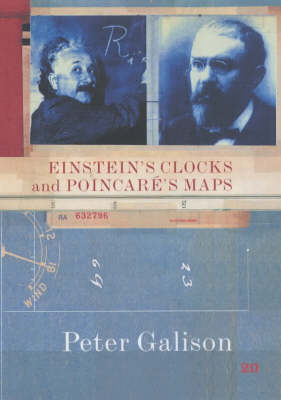
Einstein's Clocks and Poincare's Maps
Seiten
1999
Sceptre (Verlag)
978-0-340-79447-0 (ISBN)
Sceptre (Verlag)
978-0-340-79447-0 (ISBN)
- Titel ist leider vergriffen;
keine Neuauflage - Artikel merken
Only a century ago Europe had a huge number of local time zones and no proper system of synchronizing them, creating chaos for transport and communications. This study explores the stories of two men who revolutionized time as we know it: Henri Poincare and Albert Einstein.
In May 1905 Albert Einstein changed time forever; his theory of relativity had practical consequences that changed the world. Only a century ago Europe had a huge number of local time zones and no proper system of synchronizing them. This threatened chaos, particularly on the railways and communications. Synchronized time was necessary to create timetables for passengers and stop trains from crashing as they hurtled in opposite directions along single tracks. Enter two revolutionary thinkers. Henri Poincare, a member of the Paris Bureau of Longitude, realized that synchronized clocks would underpin further French conquests in Africa. So a grid of telegraph cables was planned from France all the way down to colonial Senegal and onwards. A Paris masterclock would transmit a telegraphic pulse with which all the clocks in Africa could synchronize. Meanwhile, working in the Bern patent office, Albert Einstein witnessed the stream of new inventions designed to synchronize the world's clocks. This set him thinking and suggested the revolutionary conclusion that there was no such thing as "universal time" - it was just an illusion given by properly synchronized clocks.
Published when he was only 26, Einstein's special theory of relativity paper had profound consequences for the world.
In May 1905 Albert Einstein changed time forever; his theory of relativity had practical consequences that changed the world. Only a century ago Europe had a huge number of local time zones and no proper system of synchronizing them. This threatened chaos, particularly on the railways and communications. Synchronized time was necessary to create timetables for passengers and stop trains from crashing as they hurtled in opposite directions along single tracks. Enter two revolutionary thinkers. Henri Poincare, a member of the Paris Bureau of Longitude, realized that synchronized clocks would underpin further French conquests in Africa. So a grid of telegraph cables was planned from France all the way down to colonial Senegal and onwards. A Paris masterclock would transmit a telegraphic pulse with which all the clocks in Africa could synchronize. Meanwhile, working in the Bern patent office, Albert Einstein witnessed the stream of new inventions designed to synchronize the world's clocks. This set him thinking and suggested the revolutionary conclusion that there was no such thing as "universal time" - it was just an illusion given by properly synchronized clocks.
Published when he was only 26, Einstein's special theory of relativity paper had profound consequences for the world.
Peter Galison was educated at Cambridge (MPhil in Philosophy of Science) and Harvard (BA, MA and PhD) universities. He has taught at Stanford Uiversity and is currently the Mallinckrodt Professor of History of Science and of Physics at Harvard.
| Erscheint lt. Verlag | 18.8.2003 |
|---|---|
| Zusatzinfo | Illustrations, maps |
| Sprache | englisch |
| Maße | 204 x 140 mm |
| Themenwelt | Literatur ► Biografien / Erfahrungsberichte |
| Sachbuch/Ratgeber ► Natur / Technik | |
| Geschichte ► Hilfswissenschaften ► Chronologie | |
| Geisteswissenschaften ► Geschichte ► Regional- / Ländergeschichte | |
| Naturwissenschaften | |
| Sozialwissenschaften | |
| ISBN-10 | 0-340-79447-X / 034079447X |
| ISBN-13 | 978-0-340-79447-0 / 9780340794470 |
| Zustand | Neuware |
| Informationen gemäß Produktsicherheitsverordnung (GPSR) | |
| Haben Sie eine Frage zum Produkt? |
Mehr entdecken
aus dem Bereich
aus dem Bereich
Buch | Hardcover (2024)
John Wiley & Sons Inc (Verlag)
139,95 €

